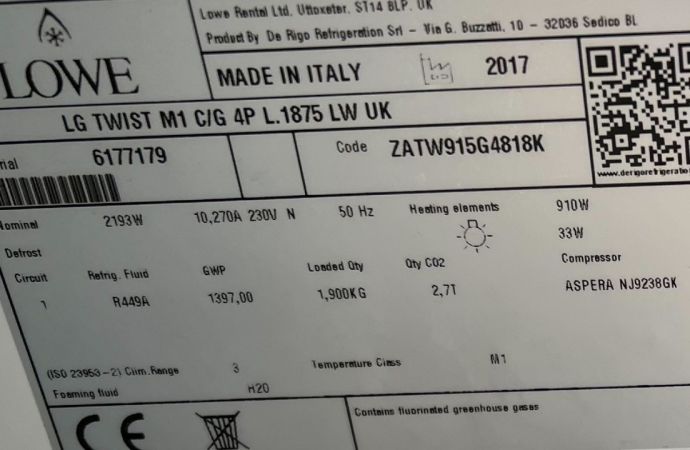Janos Maté, a senior consultant in Greenpeace International’s political business unit, told hydrocarbons21.com that the current charge limit for domestic refrigeration in the United States must increase.

The U.S. Environmental Protection Agency (EPA) has listed hydrocarbons (HCs) R600a and R441A – an HC blend – as alternatives to HFCs in domestic refrigeration in the United States under the Significant New Alternatives Policy (SNAP) program since 2011, but at a maximum charge of just 57g. In 2015 propane was also added as a suitable alternative.
The Underwriters Laboratories (UL), a U.S. safety body, this year adopted a new safety standard (UL 60335-2-24, Edition 2), which boosted the hydrocarbon charge allowed in U.S. domestic refrigerators from 57g to 150g.
When will the U.S. EPA do the same, and why is the agency yet to act?
Hydrocarbons21.com spoke to Janos Maté – senior consultant with Greenpeace International’s political business unit, who is familiar with domestic refrigeration’s transition from HFCs to HCs having worked on this issue since the early 1990s – about what is holding up this move and what that this means for the U.S. market.
Hydrocarbons21: Why is the limit of 57g by the U.S. EPA not enough for U.S. manufacturers of fridges?
Janos Maté: The 57g limit unnecessarily impedes the marketing of larger refrigerators which may require somewhat larger charges. The key point is that refrigerators with larger hydrocarbon charges are safe and are sold in Europe and elsewhere in the world. So, what's so unique about the U.S.? Why would a unit that is safe in Berlin, London and Tokyo not be safe in Los Angeles, New York or Washington?
Hydrocarbons21: Why is this a big barrier in the United States?Maté: My understanding is that a 57g charge is adequate for smaller units but not for the larger fridges commonly used in North America.
The 150g international standard is not the minimum needed for domestic fridges. It accommodates the requirements for larger units. Most models, depending on size and features, require anywhere between 40 and 120g.
Hydrocarbons21: Do you think it’s a question of flammability?
Maté: The EPA cites flammability concerns but those concerns are much influenced by historical business interests. The fear of flammability has not been a consumer impediment to hydrocarbon fridges in Europe, Asia or Latin America. The charge in refrigerators is contained in a hermetically sealed system.
North Americans, with their cars, barbecue culture, natural gas kitchen ranges and home heating furnaces are used to living with hydrocarbons. The flammability issue is a bogey man deployed by the producers of fluorocarbons and their traditional commercial partners in the appliance manufacturing sector.
The interest of the fluorocarbon industry to prolong the use of their products as long as possible, and then to replace them with a new generation of their products (eg. HFOs) is obvious. They correctly view hydrocarbons as a main competition and a direct threat to their historical global monopoly in the refrigerant sector.
Meanwhile appliance manufacturers and dealers also have short term business rationale for holding on to the past. But eventually they shall have to bite the bullet and transition to sustainable technologies.
Hydrocarbons21: What has your experience with HC technology taught you so far?
Maté: Fluorocarbons were a brilliant invention. Too bad they pose a threat to the future of life on Earth by depleting the ozone layer and significantly contributing to global warming-induced climate chaos.
It is time for North American consumers to be given the same opportunity as their European counterparts to purchase environmentally sustainable refrigerators."
– Janos Maté, senior consultant at Greenpeace
We believe, based on the success of the Greenfreeze technology (the name for the hydrocarbon domestic refrigeration programme originally started by Greenpeace, which converted the market in Europe) in Europe and elsewhere, that North American consumers would welcome the opportunity to purchase environmentally and climate safer refrigerators.
In addition to the refrigerator's design, the average consumer secondarily cares about costs, safety, reliability, efficiency and when informed about environmental concerns, about sustainability. Greenfreeze delivers on all of those factors.
It is time for North American consumers to be given the same opportunity as their European counterparts to purchase environmentally sustainable refrigerators.
Related stories



